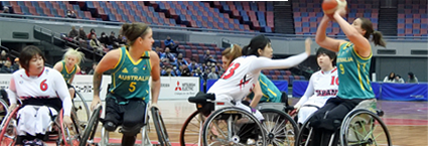The Key to the DPJ’s Revival: Rengo* Interests or Estranged Voters? BY JUNICHI FUJIMOTO
July 26, 2013
Junichi Fujimoto was born in 1958. He is a journalist. After working for newspapers and magazines, he became a freelance journalist. Since 2003, he writes a series of political articles published under the heading of “Nagata-cho Waido-sho” for the daily newspaper “Tokyo Sports”. Among other books, he wrote “Nagata-cho Kitan (Curious Incidents at Nagata-cho)”(Fusosha Publishing). His blog is: http://fujimoto-junichi.blogspot.jp/
The last Japan’s Upper House election largely resulted in what has been projected. It’s true that the Liberal Democratic Party won by a landslide with 65 seats, but only 18 proportional seats of the 20 plus predicted have been secured.
Voters have certainly wanted to break the legislative deadlock, expecting political stability by bestowing the LDP-New Komeito ruling coalition with the absolute majority of seats in the House of Councilors, which is going to allow them to monopolize chairs in standing committees. However, a touch of public dissatisfaction with the Abe-LDP sweeping victory was noticeable in the voting behavior.
Besides, difficulties lie ahead of the crushingly defeated Democratic Party of Japan. Before the ballot-counting outcome, Goshi Hosono, Secretary-General of DPJ has self-protectively expressed his intention to resign, which shows weaknesses and limitations inherent to the party. Does this mark the end of the Democratic Party of Japan? Is the party going to take the path towards reformation? A certain time will be needed to evaluate.
The key to revival lies in the Rengo, which is the major support organization for the Democratic Party of Japan.
In the last election the 7.1 million ballots obtained by the DPJ almost match the number of members of unions affiliated to the Japanese Trade Union Confederation, but if ballots casted by unionists’ family members are taken into account, it is certain that the DPJ has lost its Rengo ballots. Also, that in recent years labor unions have seen their organization slacken is remarkable. Consequently, the core ballots the DPJ expected from the Rengo have been doubly lost.
Thus, the Democratic Party of Japan needs to build up a stable constituency afresh, but the Rengo is also going to be a hindrance to such a task.
The DPJ secured 7 proportional seats out of which 6 are occupied by candidates from unions affiliated to the Rengo. The influence of the Rengo over the party will naturally increase. In other words, it will be more difficult for the DPJ to put forward policies which are against the interests of the Confederation.
As everybody knows, the Rengo consists of a mosaic of labor unions such as the Japan Teachers’ Union, the left-wing of the Government and Public Workers Union and the Government and Public Workers Union, both part of the All-Japan Prefectural and Municipal Workers’ Union, the centre-right obedience of the Japanese Congress of Industrial unions such as the Japanese Electrical, Electronic and Information Union and the Confederation of Japan Automobile Workers Union. Such diversity has sometime sparked off contention between political lines within the Democratic Party of Japan.
The reason why the Democratic Party of Japan could only present unsatisfactory campaign promises about nuclear power plants and administrative reform policies is to find here.
Also, the political agenda should have as its priority of priorities the betterment of the condition of temporary workers who make up roughly 40 percent of all workers, part-time workers, and mostly non-unionized women and youths. However, in its employment and social security policies, the DPJ has to protect the interests of the Rengo whose most members are regular employees. Will the DPJ remain a mere cat’s paw of the Rengo? Will it seek to expand its supporter platform to the fledgling working class? The future of the DPJ will depend on how it deals with these two options.
*The Rengo refers to the Japanese Trade Union Confederation, a major support platform of the Democratic Party of Japan. (Note by the translator)
[Excerpt from the blog “Fujimoto Junichi ga ‘Seiji wo Yomitoku’”]
PH:Headquarters of the Democratic Party of Japan (Wikimedia Commons, by Lombroso)
(Translated from Japanese by Willy Lukebana Toko)
Announcement
+ UPCOMING: The U-18 Youth Football Broadcast!
+ Special Talk between Saburo Kawabuchi (JFA Senior Advisor) and Masayuki Tamaki (NBS Chief Editor)
(In Japanese: http://op-ed.jp/archives/12359)
+ ADDIDAS CUP/ JAPAN CLUB YOUTH FOOTBALL FEDERATION
(U-18) TOURNAMENT
Semifinals on August 2(FRI)
First Game: 16 PM~
Second Game: 19 PM~
Final on August 3 (SAT): 18 PM~
Live Reporting by Katsuhiko Kaneko (for the first time he will enter the football Hall of Fame after a mass media career)
Commentator: Tatsuhito Kaneko, Sport Writer
DON’T MISS IT!
(JAPAN CLUB YOUTH FOOTBALL FEDERATION: http://www.jcy.jp)







